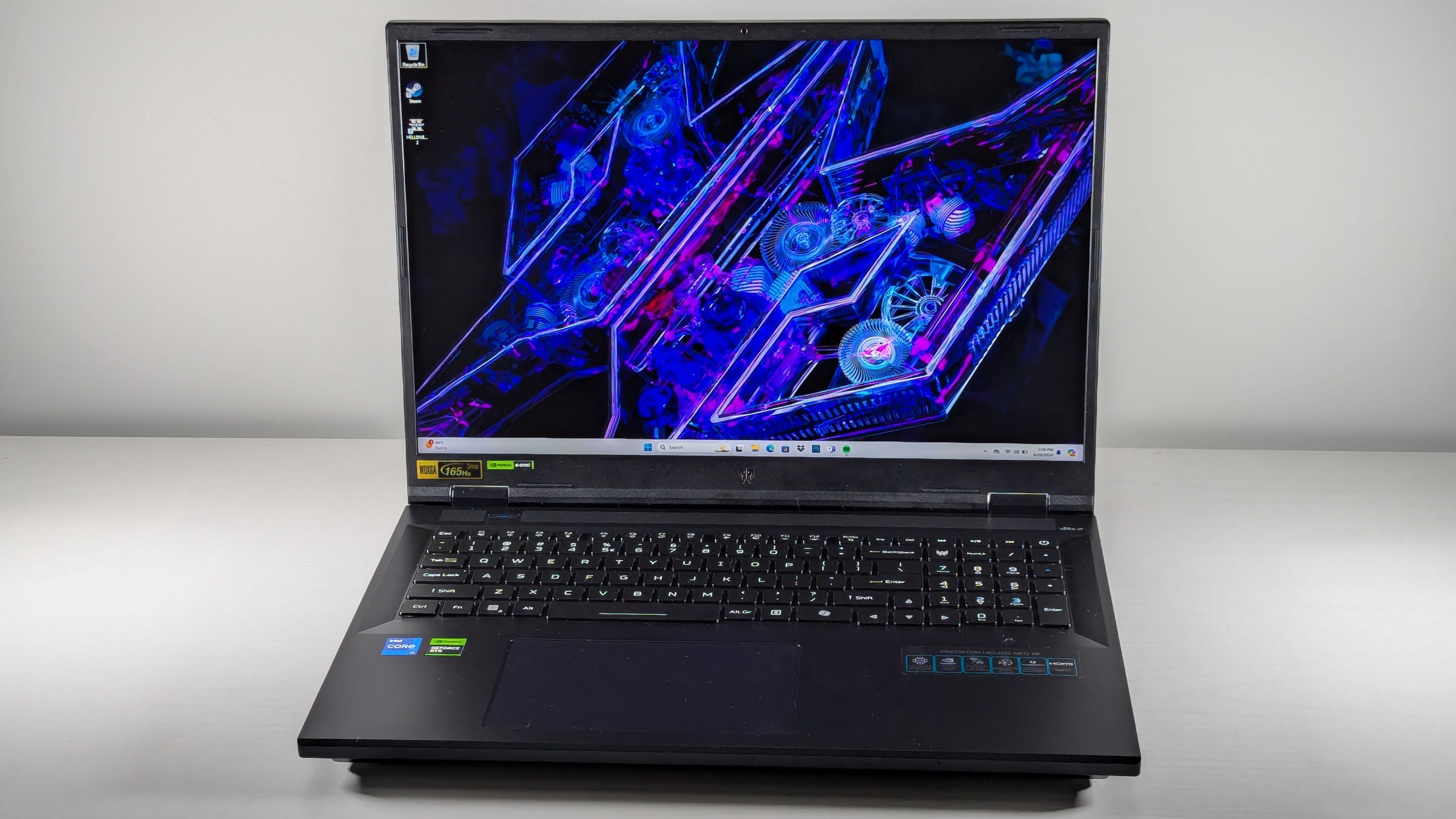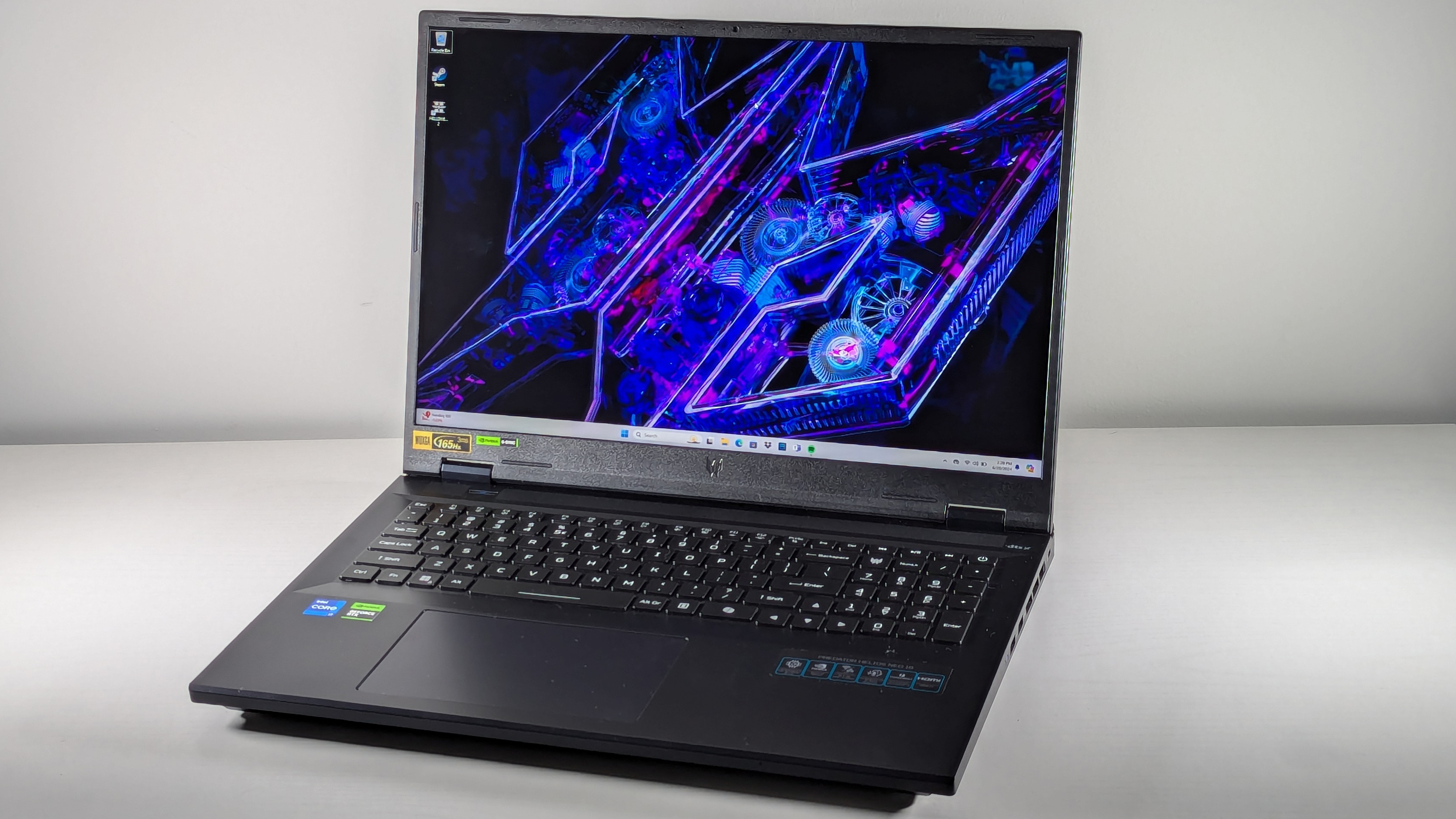
If you want a big ol’ gaming laptop with a big ol’ screen, you need to be rolling in dough — specifically, bake that dough, sell it by the metric ton, and then take that cash to buy an 18-inch gaming laptop. Well, that used to be the case, not anymore.
I reviewed the Acer Predator Helios Neo 18, which is the first 18-inch gaming laptop with mid-tier specs that I’ve ever reviewed. It shouldn’t be a surprise that bigger gaming laptops tend to cost more. But the Neo 18 we reviewed cost only $1,499.
Acer provided a rig that even our best gaming laptops page doesn’t have a place for. But what are you sacrificing if you’re stacking up an 18-inch gaming laptop with lower-performing components? Is there a big difference or is it just about the same? Let’s jump in to see what the numbers tell us.
Is it bad to get a big gaming laptop with cheaper specs?
If I didn’t know any better, I’d say that a bigger display means your GPU is working harder to cover all that real estate, so the Neo 18’s cheaper Nvidia GeForce RTX 4060 GPU might falter, but the numbers say otherwise.

When we tested the Predator Helios Neo 18 on the Borderlands 3 benchmark (Badass, 1080p), it scored 82 frames per second, which matched the average mainstream gaming laptop exactly. It’s also comparable to its 16-inch sibling (84 fps). On the Red Dead Redemption 2 benchmark (Medium, 1080p), the Neo 18 matched the average again with 64 fps. That time, the Neo 16 scored 65 fps. The numbers are so close that the difference is inconceivable to the average user.
And don’t count out its overall performance, either. Yeah, it’s got a strong Intel Core i7-14650HX processor, but the real highlight is its 1TB SSD, which sports a transfer rate of 2,184 megabytes per second. That means all of the apps and games being pumped out into the massive 18-inch screen are performing a lot faster than most other gaming laptops in its class (1,568 MBps).
But how does the display itself hold up? You’re getting a whole 18 inches, it would be awkward if you saw a whole lot of ugly. I’m pleased to say that the Helios Neo 18 doesn’t disappoint there, either, even with its lower-tier 1920 x 1200, 165Hz panel.
The Neo 18 covered 77.8% of the DCI-P3 color gamut and averaged 377 nits of brightness. That means it is plenty bright and decently colorful. It does suffer a bit on the color, though, paling in comparison with its 16-inch counterpart (92%). However, for a display that size and at that price, it’s a respectable effort. It beat the average mainstream gaming laptop on brightness (364 nits) and fell short on color (83.9%).
The only bad thing about a big display in a gaming laptop is the battery life (3:14), but are you really buying an 18-inch gaming laptop worried about its portability?
Outlook
Being able to afford an 18-inch gaming laptop felt like a far-fetched dream, but with rigs like the Acer Predator Helios Neo 18, it actually feels like a valid option. I hope that more manufacturers decide to pursue this niche for the sake of those that love a big screen but can’t necessarily afford a down payment on a car.
The performance of the Acer Predator Helios Neo 18 is also proof that you don’t sacrifice anything (except battery life) when you bump display sizes even if you go for mid-tier components like the Nvidia GeForce RTX 4060. Hell, it’s powerful enough to run Cyberpunk 2077 at 31 fps on Ray Tracing: Ultra, 1080p settings.
If you’re looking for a big gaming laptop on a budget, now is your time to score the Acer Predator Helios Neo 18.







